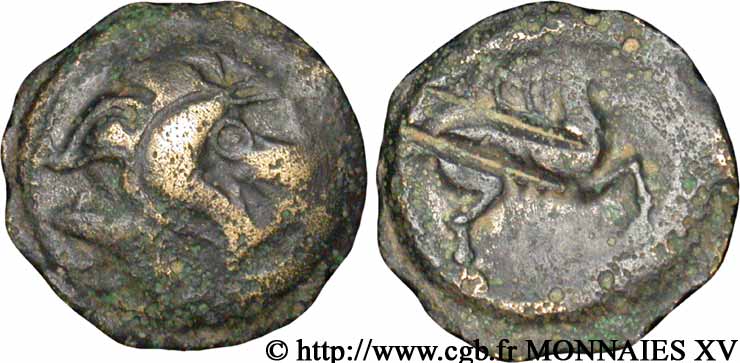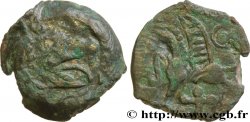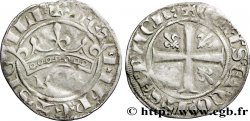v15_0414 - BITURIGES CUBI, INCIERTAS Bronze au loup et au pégase
MONNAIES 15 (2002)
Precio de inicio : 118.00 €
Valoración : 240.00 €
lote sin vender
Precio de inicio : 118.00 €
Valoración : 240.00 €
lote sin vender
Tipo : Bronze au loup et au pégase
Fecha: Ier siècle avant J.-C.
Metal: bronce
Diámetro: 18 mm
Eje de acuñación: 8 h.
Peso: 3,31 g.
Grado de rareza: R2
Comentarios sobre el estado de conservación:
Exemplaire bien centré au droit, revers légèrement décentré et portant deux coups de burin parallèles sur le cheval
N° en los catálogos de referencia :
Anverso
Titulatura del anverso: ANÉPIGRAPHE.
Descripción del anverso: Tête de loup à droite, comme tirant la langue.
Reverso
Titulatura del reverso: ANÉPIGRAPHE.
Descripción del reverso: Jument ailée à droite, la queue en forme d’esse.
Comentario
Le cheval a la particularité d’avoir des pis comme sur les exemplaires RN 1837, pl. VII, 3 et Lambert 1864, pl. V, 3 ; c’est donc une jument. La frappe du revers permet de constater qu’il n’y a aucun symbole sous la jument. Le revers est biffé au burin, comme sur l’exemplaire RN 1837, pl. VII, 3, Lambert 1864, pl. V, 2, ou encore Lyon n° 639 à 641 ; cette pratique est différemment interprétée comme étant une marque de démonétisation et une utilisation cultuelle. Simone Scheers fait remarquer que ces “exemplaires entaillés sont peut-être originaires des sites de Soings-en-Sologne et de Gièvres où ces bronzes portaient presque tous un ou plusieurs coups de cisaille, comme le faisait remarquer la Saussaye”.
The horse has the particularity of having udders as on the examples RN 1837, pl. VII, 3 and Lambert 1864, pl. V, 3; it is therefore a mare. The strike on the reverse shows that there is no symbol under the mare. The reverse is crossed out with a burin, as on the copy RN 1837, pl. VII, 3, Lambert 1864, pl. V, 2, or even Lyon n° 639 to 641; this practice is variously interpreted as being a mark of demonetization and a cult use. Simone Scheers notes that these “notched examples are perhaps originating from the sites of Soings-en-Sologne and Gièvres where these bronzes almost all bore one or more shear blows, as noted by la Saussaye”
The horse has the particularity of having udders as on the examples RN 1837, pl. VII, 3 and Lambert 1864, pl. V, 3; it is therefore a mare. The strike on the reverse shows that there is no symbol under the mare. The reverse is crossed out with a burin, as on the copy RN 1837, pl. VII, 3, Lambert 1864, pl. V, 2, or even Lyon n° 639 to 641; this practice is variously interpreted as being a mark of demonetization and a cult use. Simone Scheers notes that these “notched examples are perhaps originating from the sites of Soings-en-Sologne and Gièvres where these bronzes almost all bore one or more shear blows, as noted by la Saussaye”








 Informar de un error
Informar de un error Imprimir la página
Imprimir la página Comparte mi selección
Comparte mi selección Haz una pregunta
Haz una pregunta Consignar / vender
Consignar / vender
 Descriptivo
Descriptivo















